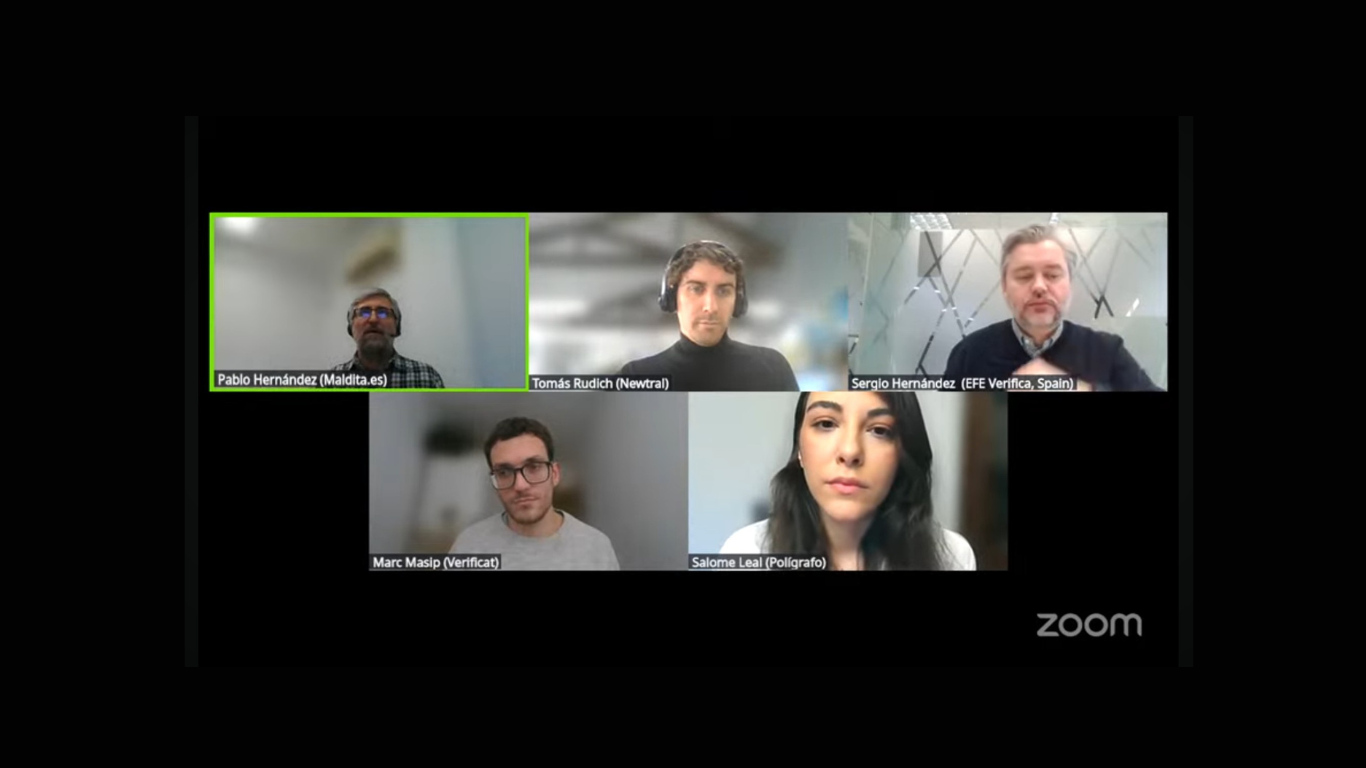Disinformation increases in times of crisis and the journalist fact-checkers who dealt with the phenomenon during the floods caused by the isolated high-level depression, DANA, which occurred in October in Valencia, Spain, explained how its production and dissemination works. The participants in the IBERIFIER webinar pointed out which were the main lies detected and whether Artificial Intelligence, AI, was involved in their composition. The webinar took place on 27 February but can be viewed on IBERIFIER’s YOUTUBE channel.
Salomé Leal, from Polígrafo, explains that the population is very vulnerable during a period of crisis and so preparations to combat disinformation must be made in advance, pointing to the role of literacy.
The Polígrafo journalist was one of the speakers at the online session ‘Disinformation in times of crisis: the case of Dana in Valencia’, organised by Maldita.es and IBERIFIER. Fact-checkers from Maldita.es, Verificat, Newtral and EFE Verifica, the organisations that make up the consortium, also took part.
Marc Masip, from Verificat, reaffirms Salomé’s point of view: ‘The manipulation of information in times of crisis has the particularity of finding citizens with few defences, they need to obtain information urgently.’
Pablo Hernández, head of Maldita.es, who led the session, believes that what has happened with the content on DANA is a compilation of all the models already catalogued on disinformation. It could give rise to a manual, he says.
Tomás Rudich, from Newtral, recalls that many of those who created adulterated information went into the field, some of them influencers, and that it was from there that they disseminated this content.
According to Sergio Hernández, ‘it was unprecedented organised disinformation’. He recognises that it was tempting for those who wanted to take advantage of the catastrophe to carry out intentional disinformation with precise objectives. In his opinion, one of the effects of the disinformation phenomenon during DANA was to undermine trust in institutions.
Among the strongest pieces of disinformation, the verifiers highlighted the exaggerated number of deaths and, as Tomás Rudich, from Newtral, emphasised the content about the existence of bodies inside an underground car park.
As far as formats are concerned, the verifiers didn’t detect any significant new models created using Artificial Intelligence.

